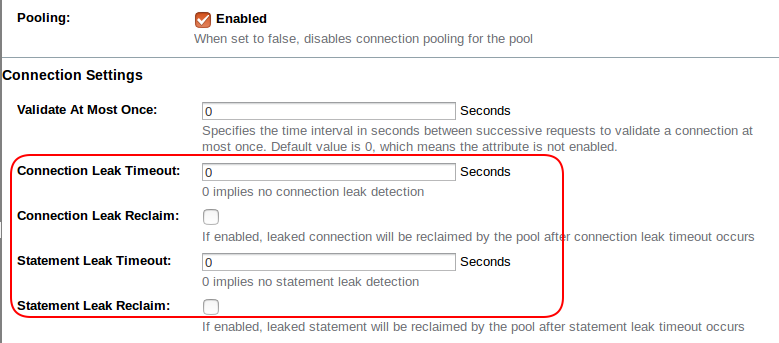Statement and Connection Leak Detection
Statement and Connection Leak Detection allows you to set time-outs so that if Statements or Connections haven't been closed by an application they can be logged and/or closed.
By default these values are set to 0 meaning detection is turned off.
In testing, it is recommended that leaks are logged after a short timeout but not closed. In production, it is recommended that leaks are closed and all logged leaks are monitored.
Setting Leak Detection via the admin console
- Click on the name of the pool
- Select the advanced tab
- Scroll down to Connection Settings
- Set the Connection Leak Timeout and Statement Leak Timeout value in seconds

Setting Leak Detection via asadmin
You can set the time-out values with the following commands:
asadmin> set resources.jdbc-connection-pool.test-pool.statement-leak-timeout-in-seconds=5
asadmin> set resources.jdbc-connection-pool.test-pool.connection-leak-timeout-in-seconds=5
You can turn on reclaiming of the leaking resources with the following commands:
asadmin> set resources.jdbc-connection-pool.DerbyPool.connection-leak-reclaim=true
asadmin> setresources.jdbc-connection-pool.DerbyPool.statement-leak-reclaim=true
Once these values are set if connection or statement leaks are detected you will see messages similar to the ones below in the application log.
WARNING: A potential connection leak detected for connection pool test-pool. The stack trace of the thread is provided below:
WARNING: A potential statement leak detected for connection pool test-pool. The stack trace of the thread is provided below: